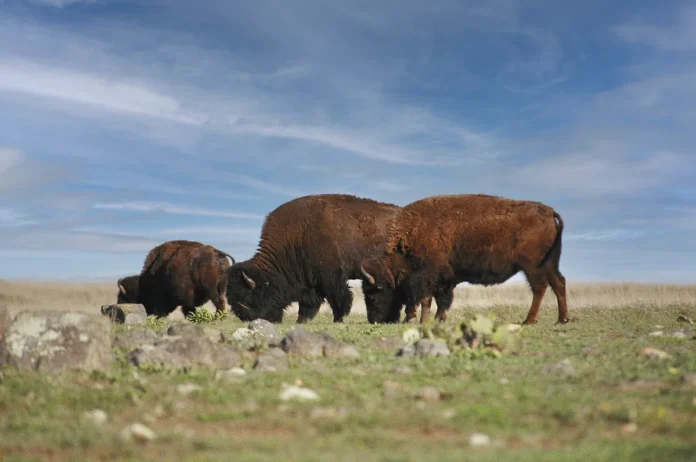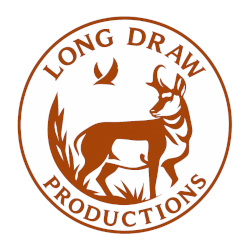I first met them the way you should—on foot, uphill, and a little out of breath. The wind was talking through the grass and a band of bison shouldered over a rise, swinging those great heads like wrecking balls, young calves red as rust bobbing between them. I’d come with a camera and a shortlist of questions: How did we almost lose this animal? Who brought it back? And what truth hides in the rumor that there are no “pure” bison left?
Let’s get straight to it.
From tens of millions to a few hundred
Before the railroad, sharpshooters, and hide markets, American bison likely numbered in the tens of millions across the heart of the continent. By the end of the 1880s, the species had collapsed to a few hundred animals—an industrial-scale slaughter fueled by profit and policy. It’s not romantic to say we nearly erased them; it’s just accurate. By 1889 only a few hundred plains bison survived in the wild or in scattered captive groups, with a handful of ranchers gathering the last remnants to keep the species from winking out entirely.
A historian’s estimate puts the nadir at roughly 456 known animals on January 1, 1889. Whether you take that number or a slightly different—but still tiny—count, the bottom line isn’t in dispute: we drove a continental keystone to the brink within a single generation.
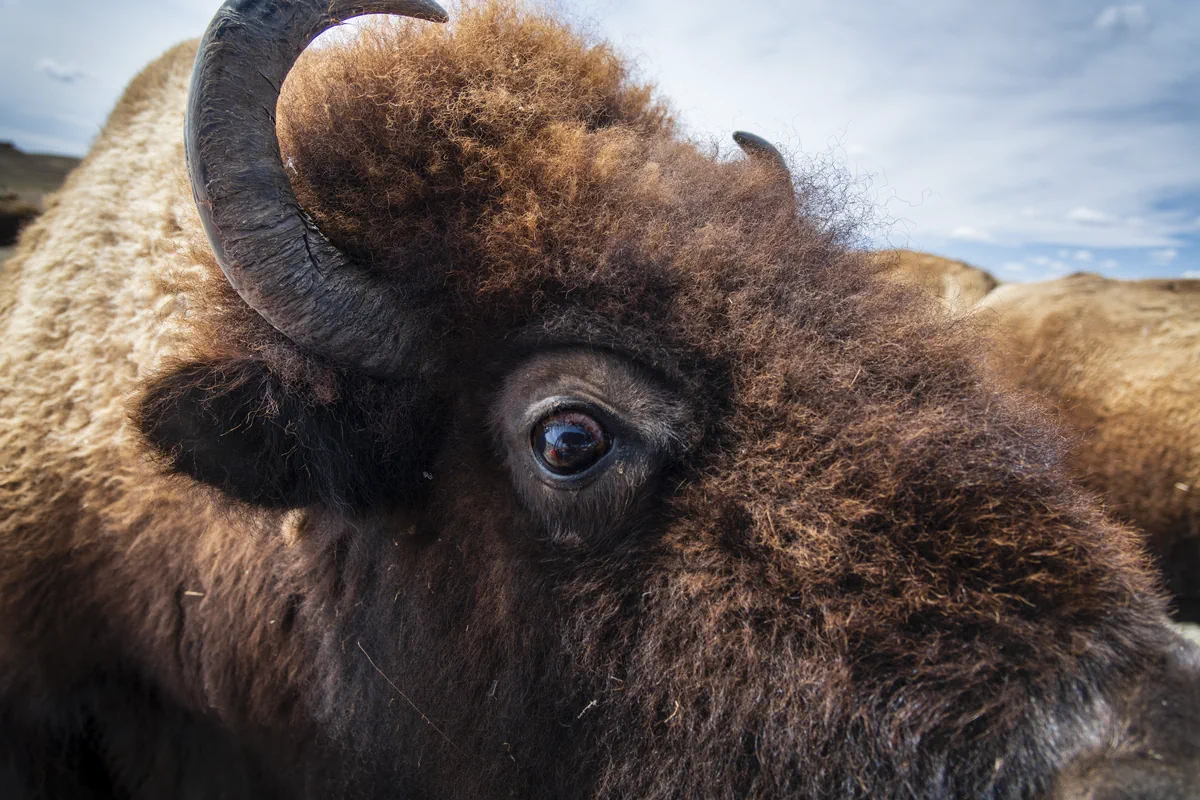
What “recovery” looks like—numbers and nuance
Today, the tally is a mix of wildlife and agriculture. The Department of the Interior manages about 11,000 bison in 19 herds across 4.6 million acres of public lands; states and tribes manage additional conservation herds. Private ranches and farms account for the majority of animals. Recent surveys count close to half a million bison in North America, with only a small fraction living as conservation herds on large landscapes.
Yellowstone—our only continuously wild U.S. population since prehistoric times—holds about 5,000 animals in two main herds. To keep those animals wild while managing conflicts and disease risk, the park now prioritizes transferring brucellosis-free bison to tribes rather than sending them to slaughter.
The uncomfortable genetics question
For years, some conservation herds—Yellowstone and Wind Cave among them—were heralded as free of cattle genes. Earlier testing found no cattle mitochondrial DNA or microsatellite evidence in Yellowstone’s bison, and many of us repeated that line. Then whole-genome sequencing caught up with us. Newer research shows low-level domestic cattle introgression in every herd tested, including animals from Yellowstone and Wind Cave. Levels are small, but they’re there.
Two clarifications that matter:
- This hybridization didn’t start with the “beefalo craze” of the 1970s. Ranchers were crossing bison and cattle—“cattalo”—as far back as the late 1800s. That’s where most of the genetic leakage occurred.
- Irony alert: most modern “Beefalo” cattle don’t even meet the breed’s own bison-ancestry claims. The label often oversells the reality.
If you’re after purity in the absolutist sense, you won’t find it. If you’re after an ecologically functional bison—an animal that behaves like a bison, shapes a prairie like a bison, and carries overwhelmingly bison DNA—that animal is standing right in front of you.


Why ranches matter (whether purists like it or not)
You can’t tell this comeback story without private landowners. Ted Turner’s ranches alone manage tens of thousands of bison—by far the largest private herd on the continent—and those herds have been a genetic and logistical resource for wildlife agencies and NGOs for decades. Across the country, nearly 2,000 private U.S. operations raise bison, and while many are commercial enterprises, they are part of why the species isn’t a museum piece.
Then there’s American Prairie in Montana, piecing together a vast grassland reserve stocked with bison and other natives. Projects like this don’t just boost headcounts; they restore ecology: grazing heterogeneity, wallowing, seed dispersal, space for grassland birds, and predator–prey dynamics. That’s the frontier now—turning numbers into functioning landscapes.
Tribes leading the way
If you want the most hopeful chapter, look to Indian Country. The InterTribal Buffalo Council now includes dozens of tribes across the United States, collectively managing more than twenty thousand buffalo on nearly a million acres. In recent years, hundreds of bison have been returned to Tribal lands as part of an expanding, Indigenous-led movement. This is restoration with cultural memory—food sovereignty, language, ceremony, land management—at its core.
Yellowstone’s Bison Conservation Transfer Program is another sign of the times. Instead of shipping captured bison to slaughter when they wander beyond park lines, the program quarantines and tests animals for brucellosis and moves the disease-free ones to Tribal herds. Since 2019, hundreds have gone to the Fort Peck Assiniboine and Sioux Tribes, with many subsequently shared to other Nations. It’s the largest such transfer in history, and it’s accelerating.
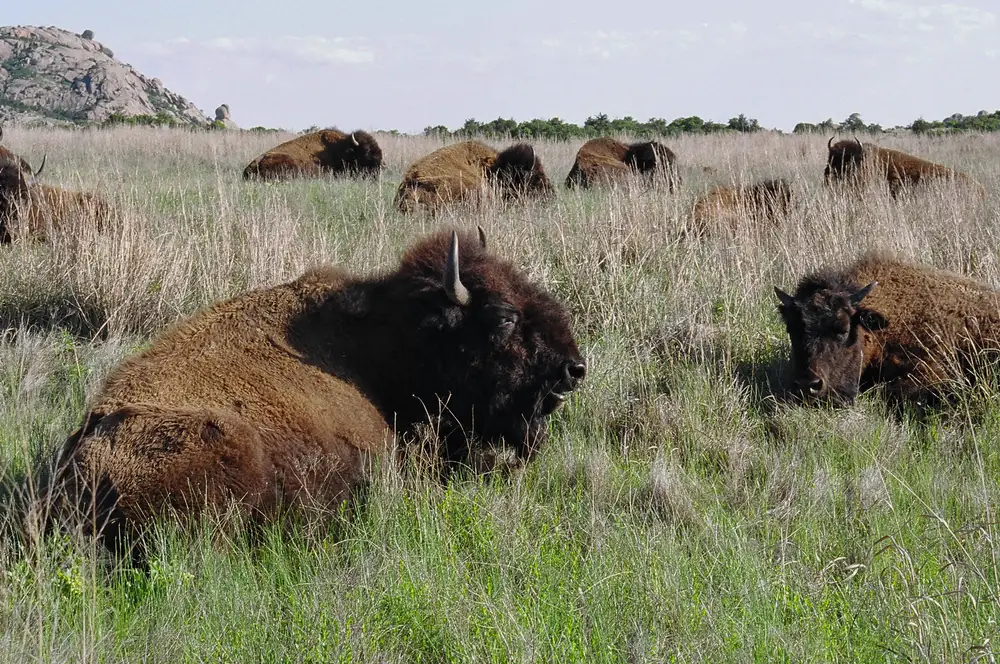
Some tribes are also rewriting how the law sees these animals. On the Wind River Reservation, for instance, buffalo have been reclassified as wildlife rather than livestock—more than a symbolic act. It reframes management around ecology and heritage instead of commodity.
The disease elephant in the room
If you’re wondering why we don’t simply open the gates and let bison spill back across the West, two words: brucellosis and politics. Bison and elk in the Greater Yellowstone Area carry Brucella abortus, a livestock disease largely eradicated elsewhere in the U.S. Agencies have to maintain separation between infected wildlife and cattle; producers have zero appetite for renewed outbreaks. That’s why the transfer program is slow and why “where bison can go” is still a fight in statehouses and courtrooms. The science is evolving, but the constraint is real.
What bison do that cattle don’t (and why it matters)
I’ve watched bison shift a prairie with their bodies. They graze differently than cattle—roaming farther, tolerating harsher weather, wallowing to expose soil patches that jump-start plant diversity, and leaving behind a mosaic of grass heights that suits everything from pronghorn to grasshopper sparrows. When we talk about “bringing bison back,” we’re not chasing a headcount; we’re chasing those processes.
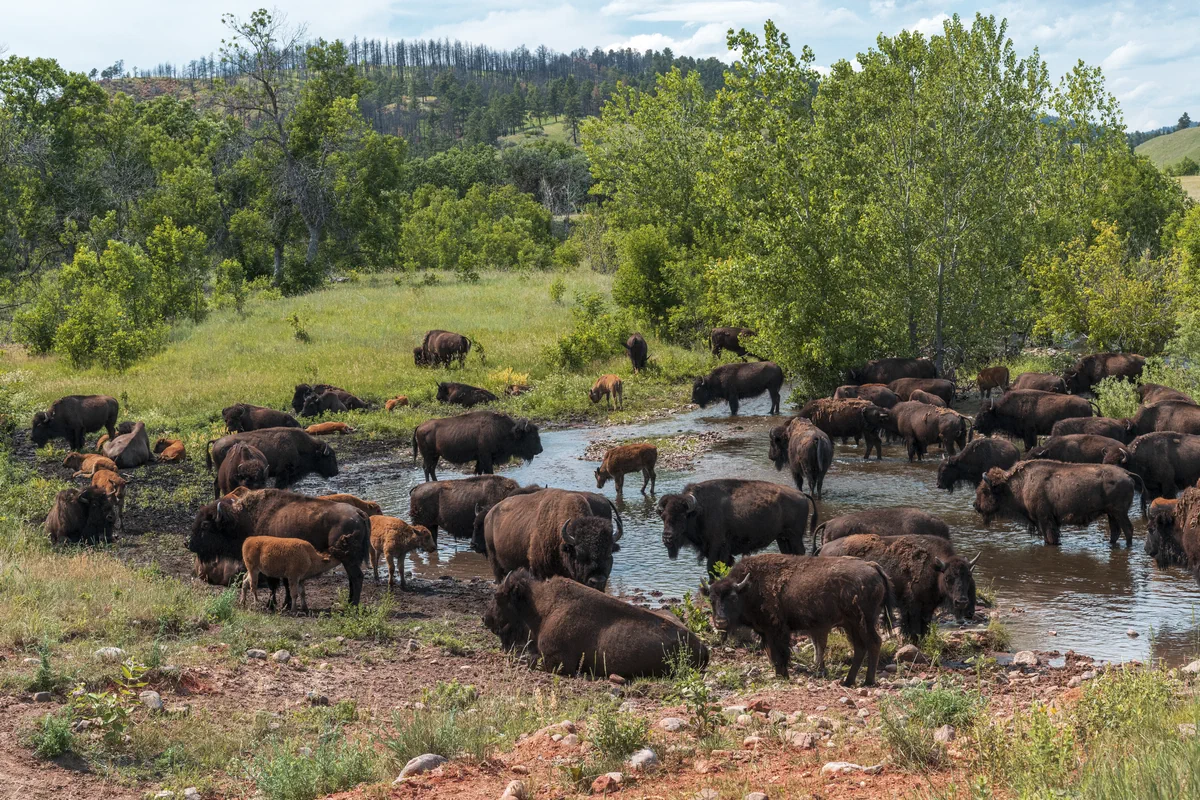
So—are ranches “bringing buffalo back”?
Yes, but be honest about what “back” means. Private ranches stabilized the species and now supply animals, genetics, and sometimes land to conservation and Tribal projects. Public agencies protect and manage core herds. Tribes are re-stitching buffalo into culture and economy at scale. NGOs and private foundations are building the big landscapes where bison can be bison again. All of those pieces matter, or the thing wobbles.
The myth we need to retire
I’ve heard it a thousand times: “There are no pure buffalo left because of Beefalo.” It’s half-true, half-wrong, and entirely misleading. The real hybridization problem started long before the 1970s, when 19th- and early 20th-century ranchers deliberately crossed bison and cattle. Modern genome work shows low-level cattle DNA scattered across today’s herds. But the flip side is just as important: most animals labeled “Beefalo” today don’t meet their own bison-ancestry claims. Either way, the practical takeaway is this: obsessing over genetic absolutes won’t restore the prairie. Managing healthy, diverse, ecologically performing herds will.
Where this goes next
Here’s what it will take if we’re serious:
- Bigger, connected grasslands. Not just pastures—landscapes. American Prairie is one model; large Tribal ranges designed to carry thousands of animals are another. Programs that knit public, private, and Tribal acres are the future.
- Transfers, not slaughter. Keep scaling the Yellowstone transfer pipeline and copy it wherever disease risk can be managed. It turns conflict into conservation and respects treaty rights and cultural leadership.
- Clear rules of the road. States, tribes, and feds need durable frameworks for where bison can roam, how disease risk is handled, and how neighbors are made whole. Politics is the bottleneck; policy is the wrench.
- Private-public-Tribal partnerships. If you’re waiting for a single hero, you’ll be waiting a long time. Turner’s numbers, Tribal acres, federal herds, NGO projects—mix them well and the species thrives.
The moment that keeps me in it
Late light, a cold front, and a bull so wide the horizon seems to bend around him. He stops, tilts that beard into the wind, and the calves press closer to their mothers. You feel it in your ribs: this isn’t nostalgia. It’s presence. Not a symbol on a nickel. Not a logo on a lodge. A living engine that built these plains and can help keep them honest if we give it the room.
We nearly erased bison. Then we did the harder work—slow, messy, expensive—to bring them back. Not perfectly, not purely, but back all the same. If we keep our heads on straight—grow the landscapes, honor the Tribal leadership, use the science, and refuse to let politics derail the mission—we can trade in the old museum diorama for a moving, breathing prairie again.
That’s the story we came for. That’s the one we’ll keep telling.
References and research
- U.S. Fish & Wildlife Service – Plains Bison Species Profile
- National Park Service – Yellowstone Bison Management
- National Park Service – Wind Cave Bison History & Genetics
- U.S. Department of the Interior – Bison Restoration Initiatives
- National Bison Association – U.S. Bison Industry and Herd Counts
- The Nature Conservancy – Bison Return to the Plains
- American Prairie – Large-Scale Bison Conservation Project
- InterTribal Buffalo Council – Tribal Bison Restoration
- Turner Enterprises – Private Bison Ranching & Conservation
- Yellowstone Bison Conservation Transfer Program
- USDA APHIS – Brucellosis in Bison & Cattle
- National Wildlife Federation – Bison Genetics & Cattle Introgression
- Genome Research on Beefalo & Bison Hybridization
- Texas Historical Commission – History of Cattalo & Beefalo Crossbreeding

